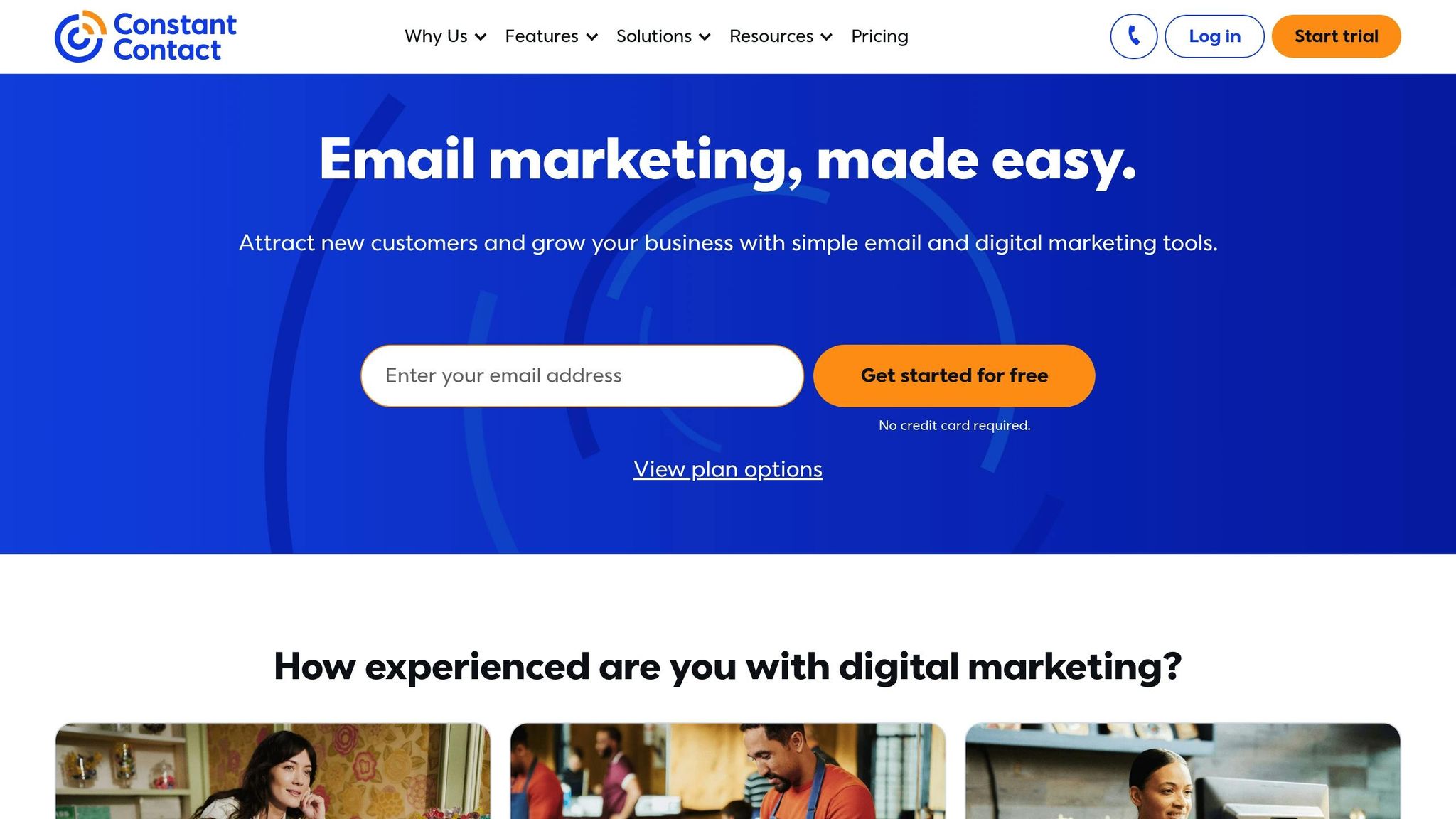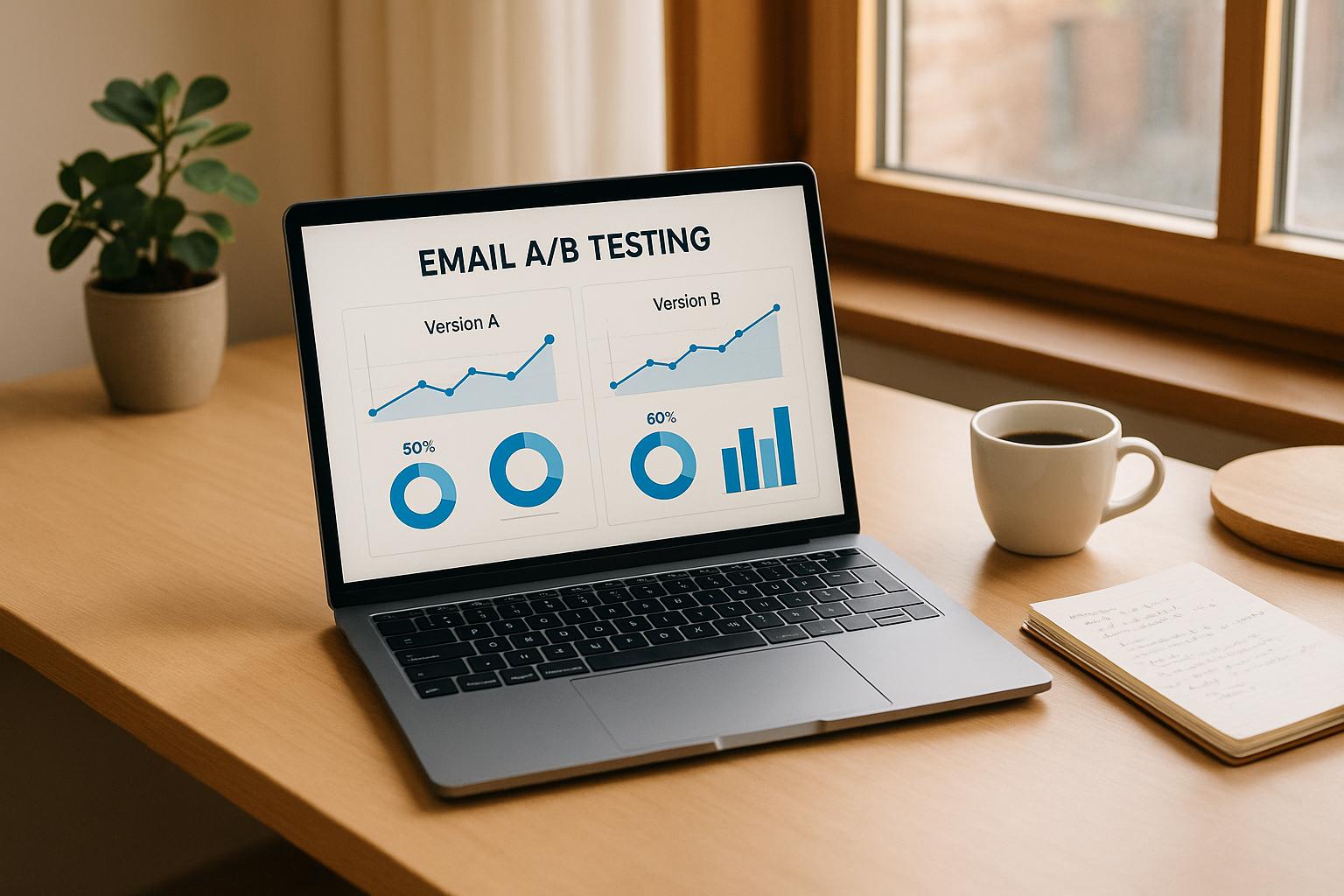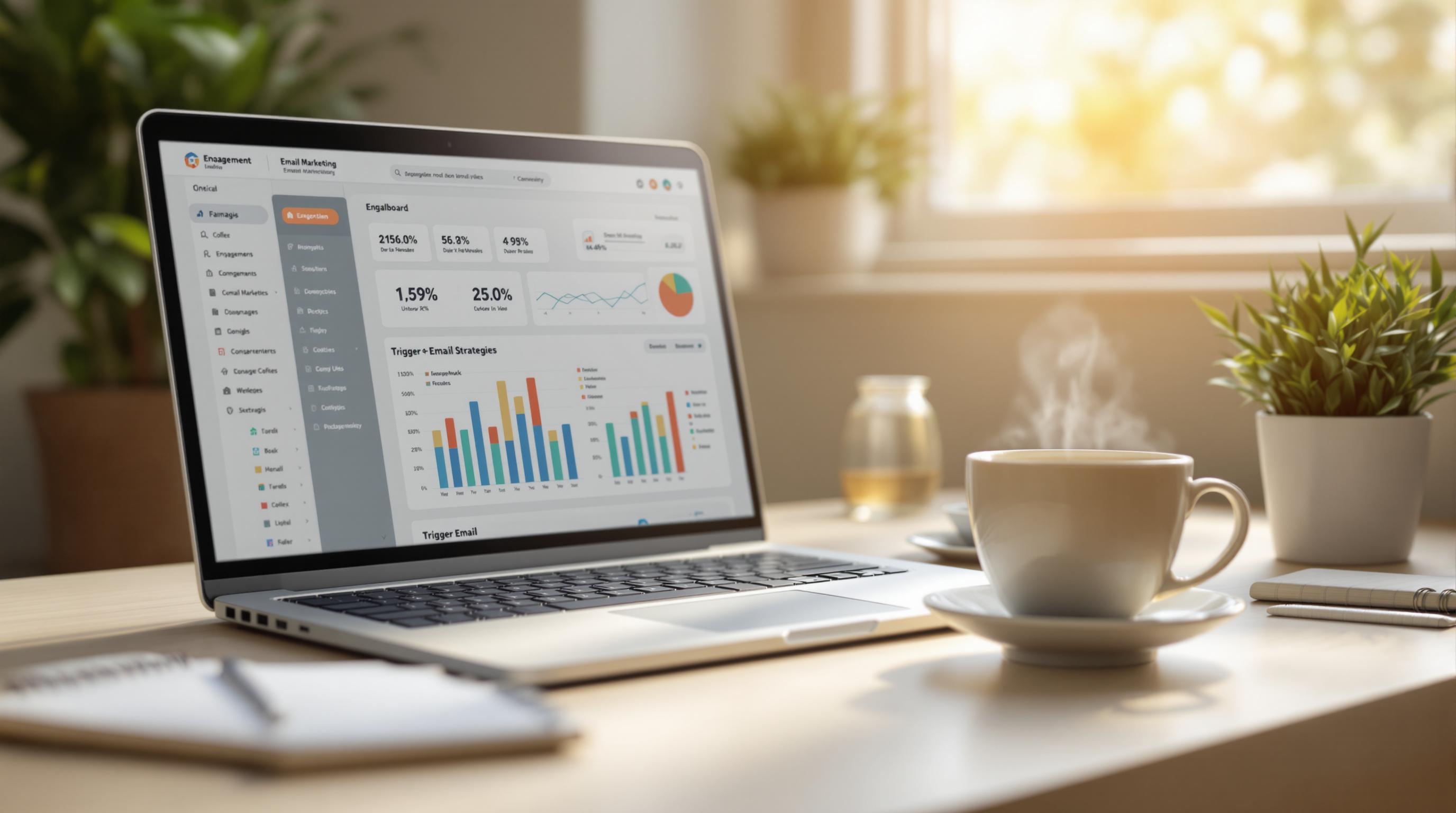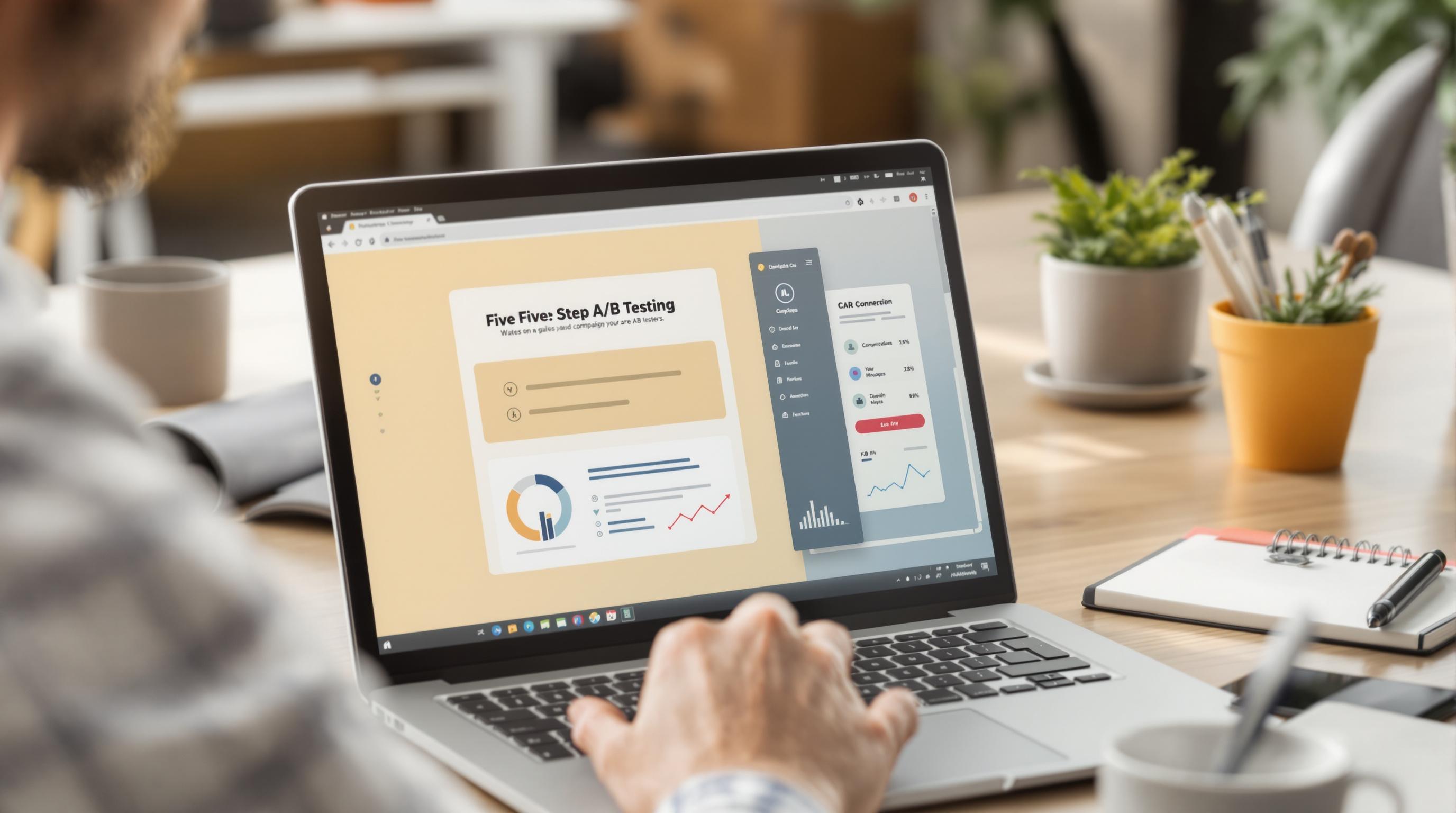Dynamic content in webinar emails personalizes messages based on recipient data like name, job title, or behavior. This approach makes emails more engaging and relevant, boosting open rates, click-throughs, and webinar registrations. Here's the key takeaway:
- Dynamic Features: Personalized subject lines, greetings, time zones, and CTAs tailored to individual recipients.
- Why It Works: Addresses specific needs (e.g., CFOs see ROI-focused content; marketers see lead-gen tips).
- Tools Needed: Email platforms with conditional logic, merge tags, and CRM integration.
- Best Practices: Test emails for compatibility across clients (e.g., Gmail, Outlook) and include fallback content.
To start, choose the right email platform, segment your audience, and focus on key dynamic elements like subject lines and CTAs. Monitor metrics like open rates to refine your strategy and increase webinar attendance.
How to Use Dynamic Content to Personalize Your Email Marketing | Constant Contact

Requirements for Using Dynamic Content
Implementing dynamic content in your webinar email campaigns takes thoughtful planning and the right tools. Getting these essentials in place can make a big difference in boosting engagement.
Choosing the Right Email Marketing Platform
Not all email platforms are equipped to handle dynamic content effectively. Look for one that supports conditional logic, merge tags, and API integrations to pull real-time subscriber data from your CRM or webinar platform.
To simplify your search, the Email Service Business Directory offers a curated list of top email marketing platforms. You can compare features, pricing, and dynamic content capabilities in one place, helping you find the best fit for your webinar marketing goals.
Pay special attention to the platform’s template editor features. Some platforms require coding knowledge to implement dynamic content, while others offer drag-and-drop editors that make personalization accessible even for non-technical users. Once your platform is selected, focus on gathering and segmenting subscriber data to make your campaigns more targeted.
Data Collection and Segmentation
Personalization thrives on accurate data. Start by collecting key demographic and behavioral details, such as job titles, industries, engagement history, and geographic locations. For webinars, geographic data is especially important to ensure that attendees see the correct time zones and dates. Confusion around event times can seriously hurt registration numbers.
Your segmentation strategy should dig deeper than basic demographics. Consider creating groups based on engagement levels, past webinar attendance, or specific challenges your audience faces. The more precise your segments are, the more relevant your dynamic content will feel to recipients.
Having clean, up-to-date data is crucial for avoiding technical hiccups.
Technical Limitations to Consider
Dynamic content comes with its own set of challenges. One of the biggest is email client compatibility. While platforms like Gmail and Outlook handle most dynamic features well, older email clients may strip out advanced personalization entirely. To address this, always include fallback content to ensure that everyone receives a clear and coherent message, even if the dynamic elements don’t display as intended.
Another concern is load times, especially when pulling data from multiple sources. Slow-loading emails can frustrate recipients, so test your campaigns thoroughly across different devices and internet speeds to ensure smooth performance.
Lastly, consider your team’s technical expertise. While many email platforms are user-friendly, complex personalization might require HTML skills or developer support. Make sure you account for the time and resources needed to design, test, and troubleshoot dynamic content before your webinar promotion deadlines. Addressing these technical challenges is key to delivering personalized, effective email campaigns.
How to Personalize Webinar Email Content
With the right tools and a well-planned data strategy, you can use dynamic content to make webinar emails feel personalized for each recipient - without sacrificing efficiency. The goal? Craft emails that seem individually tailored while still being scalable.
Personalized Subject Lines and Greetings
The subject line is your first chance to grab attention, and adding a personal touch can significantly improve open rates. For example, a subject line like "Sarah, join 500+ marketing directors at our webinar" not only addresses the recipient by name but also taps into their professional identity and adds social proof.
Inside the email, personalized greetings help set the right tone. Instead of generic openers like "Dear Valued Customer", use something like "Hi Jennifer" or "Good morning, Dr. Martinez" if you have professional titles in your database. Time-specific greetings can also work wonders for webinar emails, creating both urgency and relevance.
Adding geographic details takes personalization even further. For instance, if your webinar spans multiple time zones, you could write, "Join us tomorrow at 2:00 PM PST, Michael" for West Coast recipients or "Join us tomorrow at 5:00 PM EST, Michael" for those on the East Coast. This kind of attention to detail eliminates confusion and makes your message feel more thoughtful.
Dynamic Visual and Behavioral Content
Personalization doesn't stop at names and greetings - it extends to the visuals and content within the email. For instance, industry-specific images can make the webinar more appealing to different professional groups. A cybersecurity webinar might display one hero image for IT directors and a different one for compliance officers, reflecting their unique challenges.
Behavioral triggers are another powerful tool. If someone visits your webinar registration page but doesn’t sign up, you could send a follow-up email with content like, "We noticed you were interested in our upcoming webinar on customer retention strategies." This acknowledges their behavior and nudges them to act.
You can also use past attendance data to tailor content. For example, if someone attended a previous webinar on email automation, your email might say, "Welcome back! Based on your interest in our last session, we think you'll love this advanced workshop." On the other hand, new subscribers could receive an introduction to your company and a quick overview of the webinar.
Dynamic countdown timers add urgency while staying relevant. These timers automatically adjust to the recipient’s time zone, showing exactly how much time is left until registration closes or the webinar begins. It’s an easy way to make your email feel timely and engaging every time it’s opened.
Custom Calls-to-Action
Your call-to-action (CTA) buttons should evolve based on the recipient's journey. For example, registered attendees might see a button like "Add to Calendar," while unregistered recipients might see "Reserve Your Spot Now." Similarly, highly engaged subscribers might get direct registration links, while less engaged recipients could see softer CTAs like "Learn More."
You can also tailor CTAs to professional roles. For instance, C-level executives might see "Join Executive Roundtable," while individual contributors might get "Advance Your Skills."
Time-sensitive CTAs are particularly effective for webinars. As the event date approaches, buttons can shift from "Early Bird Registration" to "Register Now - Webinar Starts in 2 Hours," creating a sense of urgency and encouraging last-minute sign-ups.
For maximum impact, combine key data points in your CTAs. A button like "Sarah, claim your marketing director spot" uses the recipient's name and job title while creating scarcity with role-specific language. This level of personalization requires accurate data but can lead to much higher click-through rates than generic alternatives.
sbb-itb-6e7333f
Best Practices for Dynamic Content in Webinar Emails
Dynamic content in webinar emails should strike a balance between personalization and performance. The best campaigns use dynamic elements strategically, enhancing the message without compromising delivery. Here's how to refine your approach.
Keep Dynamic Elements Focused
Use dynamic content only where it truly matters. Prioritize personalization in areas like the subject line, greeting, event time zone display, and call-to-action (CTA). These are the elements most likely to boost open and click-through rates without overloading your email infrastructure.
Avoid overloading emails with too many dynamic images or complex logic. These can increase file size, slow loading times, and even lead to clipping in certain email clients. Always include fallback content to ensure smooth rendering and maintain a polished, professional look.
Test Across All Major Email Clients
Not all email clients handle dynamic content the same way. What looks great in one client might break in another. Since major email clients dominate email usage in the U.S., thorough testing is a must.
Older versions of clients like Outlook might not support advanced features. If your webinar attendees frequently use corporate email addresses, pay extra attention to dynamic elements like countdown timers, conditional content blocks, and responsive designs. Test these thoroughly in environments where compatibility might be an issue.
Mobile optimization is equally critical. A large number of business emails are opened on mobile devices, so ensure your dynamic content works seamlessly on both iOS and Android. Double-check that personalized CTAs and time zone-specific details remain readable on smaller screens.
Create a detailed testing checklist to catch potential issues, such as missing data, overly long names, or incorrect time zone displays. Always test well in advance of your email launch.
Track Engagement and Optimize
Once your dynamic emails are live, the work isn’t over. Continuous improvement based on data is what separates good campaigns from great ones. Monitor key metrics like open rates and click-through rates to gauge how well your dynamic elements are performing.
A/B testing can provide valuable insights. For example, compare emails with personalized greetings to those with generic ones, or experiment with different CTA styles. Ensure your test sample size is large enough to yield reliable results.
Look for engagement trends. Some audiences might prefer concise, straightforward messaging, while others may respond better to detailed webinar information. Use these insights to refine your dynamic content strategy.
Lastly, keep an eye on your sender reputation. Adding complexity or making format changes can sometimes trigger spam filters. Regularly monitor delivery rates, spam complaints, and inbox placement. Setting up automated alerts can help you quickly address any sudden drops in engagement or delivery performance.
Using the Email Service Business Directory
Choosing the right platform for creating dynamic webinar emails can feel overwhelming. That’s where the Email Service Business Directory comes in handy. This resource is designed to simplify your search by curating a list of platforms known for their strengths in email automation and personalization.
The directory focuses on platforms that offer features like automation, segmentation, dynamic content capabilities, and in-depth analytics. Instead of dedicating hours - or even weeks - to researching individual platforms, you’ll find a collection of pre-vetted options that have been assessed for their technical features and overall value. Here’s how this directory can guide you in finding the perfect platform.
Finding the Best Platform for Webinar Emails
The Email Service Business Directory is tailored to help you choose tools that excel in webinar marketing. It organizes platforms into categories like event promotions, lead nurturing, drip campaigns, and data-driven approaches.
Each listing provides detailed information about automation workflows, segmentation tools, and integration options. For example, you can easily identify platforms that support dynamic content features like personalized time zones, conditional content blocks, and behavior-based triggers.
The directory also highlights platforms with high deliverability rates and enterprise-level solutions. This is especially important for time-sensitive webinar emails, ensuring your invitations and reminders reliably reach your audience when it matters most.
Comparing Plans and Features
After narrowing down your options, the directory’s comparison tools make it easy to evaluate platforms based on your specific needs. It’s especially helpful for U.S. businesses, offering insights into pricing structures and features that align with American companies' requirements. You can compare plans based on several factors, such as contact limits, automation capabilities, analytics depth, and the quality of customer support.
Look for features like personalized subject lines, conditional image displays, and real-time updates. The directory lays out this information clearly, helping you decide which features are worth the investment at higher pricing tiers.
| Evaluation Criteria | Small Business Focus | Growing Company Needs | Enterprise Requirements |
|---|---|---|---|
| Contact Management | Up to 1,000 contacts | 1,000–10,000 contacts | Unlimited contacts |
| Dynamic Content | Basic personalization | Advanced segmentation | Full automation suite |
| Price | $299/month | $999/month | $2,999/month |
| Support Level | Email support | Priority assistance | Dedicated account manager |
Additionally, consider how well each platform integrates with your existing CRM and webinar tools. Review performance metrics for dynamic content, such as how personalized elements influence open rates, click-throughs, and registrations. The best platforms will provide clear data to help you refine and improve your webinar email campaigns over time.
Conclusion and Key Takeaways
Why Dynamic Content Matters
Dynamic content transforms ordinary webinar emails into engaging, personalized messages. By tailoring emails to individual recipients, you can see better engagement metrics - think higher click-through rates and a noticeable boost in webinar attendance compared to static, one-size-fits-all emails.
The key to success? Understanding your audience. Use data and segmentation to craft emails that speak directly to specific groups. This means showcasing relevant webinar topics, adapting time zones for convenience, and using language that feels personal and relatable.
Start small with dynamic subject lines and personalized greetings. As you grow more comfortable, you can incorporate advanced conditional content. The trick is to strike a balance - enhance the user experience without overwhelming your process or overcomplicating the campaign.
Don’t forget: testing and optimization are your allies. What clicks with one audience segment might flop with another, and email client compatibility can be tricky. Regular A/B testing of dynamic elements will help you fine-tune your approach and uncover what works best for your audience.
Steps to Get Started
Ready to dive in? First, evaluate your current email platform to see if it supports dynamic personalization features. If you're in the market for a new platform, the Email Service Business Directory is a great resource. It offers pre-vetted options with robust automation, segmentation, and integration tools - saving you time and ensuring you choose a solution that aligns with your webinar marketing goals.
Before making a decision, define your needs. Consider factors like the size of your contact list, your budget, integration requirements, and the level of personalization you want to achieve. Once you’ve narrowed down your options, test dynamic content on a small audience segment before rolling it out on a larger scale.
As you implement these strategies, keep a close eye on metrics like open rates, click-through rates, and webinar registrations. These numbers will not only guide your optimization efforts but also help you measure the impact of your investment in dynamic content tools. Adjust and refine your approach as you gather more data, ensuring your strategy evolves with your audience’s needs.
FAQs
How can I make sure dynamic content works across all email clients?
To make sure your dynamic content works smoothly across all email clients, stick with simple, tried-and-true HTML and inline CSS. Many email clients don’t support advanced features, so skipping complex scripts or external resources is a smart move. Instead, focus on designs that offer fallback options to ensure compatibility.
Always test your emails on various platforms to spot rendering issues before sending. Email testing tools can be a lifesaver for this. Additionally, keep the number of dynamic elements in your emails low and use server-side rendering for personalization whenever possible. A straightforward approach combined with thorough testing will help you deliver dynamic emails that look great and function well for your audience.
How can I collect and segment data to personalize webinar email campaigns effectively?
To make your webinar email campaigns more engaging, start by gathering first-party data from user interactions, registration forms, or stated content preferences. This data acts as the backbone for crafting messages that truly connect with your audience.
Then, segment your audience into groups based on factors like engagement levels, browsing habits, or demographic details. For instance, you can categorize users by how active they are on your site or by their interest in specific topics. This way, your emails feel more relevant and personalized to each recipient.
Lastly, dive into interaction data - like how previous emails performed or webinar attendance records - to fine-tune your messaging even more. When you align your content with what your audience cares about, you'll see improvements in open rates, click-throughs, and overall engagement.
How can I choose the best email marketing platform for using dynamic content effectively?
When selecting an email marketing platform for dynamic content, focus on one that provides advanced personalization tools. Features like audience segmentation, real-time data integration, and customizable content blocks are key for crafting tailored messages, such as webinar promotions, that truly resonate with your audience.
Also, ensure the platform works seamlessly with your current systems, supports automation to save time, and offers testing capabilities to fine-tune your strategies. These elements are crucial for maximizing the impact of your dynamic email campaigns.


